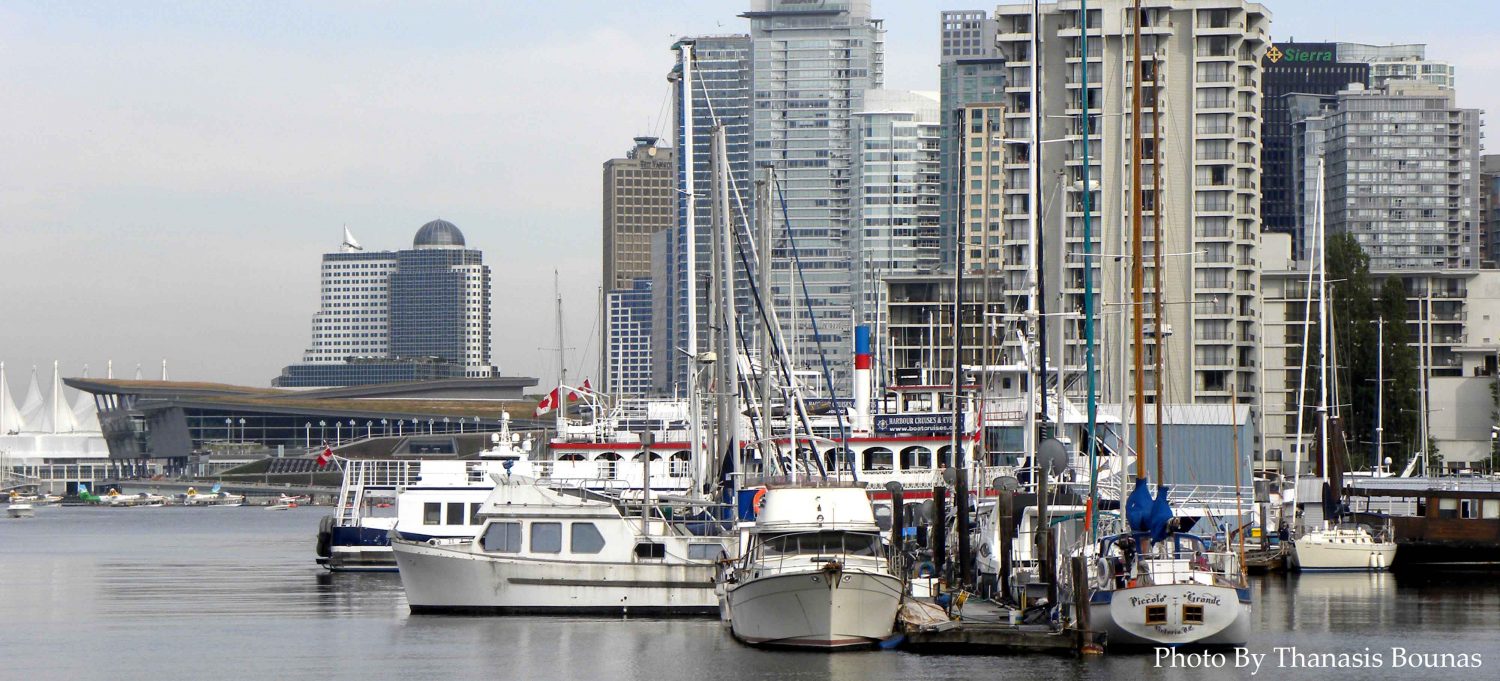
A City Born from the Water
The story of Vancouver, British Columbia, Canada, begins at its waterfront — the place where forest met ocean, and trade gave birth to a city.
For centuries, these shores have been a center of commerce, culture, and transformation.
From the earliest Indigenous settlements to the glittering skyline that stands today, Vancouver’s waterfront has always reflected the city’s soul.
Indigenous Roots and the Land Before the City
Long before European settlement, the Musqueam, Squamish, and Tsleil-Waututh Nations lived along the shores of what is now Vancouver.
They relied on the waters of Burrard Inlet for salmon, shellfish, and trade, building villages and canoe routes that connected the coast.
Their relationship with the sea was one of respect and reciprocity — a spiritual and practical foundation that continues to define the region’s identity.
The modern waterfront still carries the echoes of those ancestral tides.
The Arrival of Industry
By the mid-19th century, European settlers and traders had begun to reshape the landscape.
Sawmills rose along the shorelines of Gastown and Burrard Inlet, cutting the region’s vast cedar and fir forests into lumber for export.
The Hastings Mill, established in 1865, became the first major industrial landmark, attracting workers, merchants, and settlers to the water’s edge.
What began as a rough timber outpost would soon evolve into the nucleus of Vancouver itself.
The Birth of a Port City
When the Canadian Pacific Railway (CPR) reached the coast in 1887, it forever transformed Vancouver’s waterfront.
The railway’s terminus at Waterfront Station connected the Pacific to the rest of Canada — and beyond.
Warehouses, docks, and piers sprang up to handle goods from around the world, turning Vancouver into a gateway for global trade.
The city’s destiny as a maritime hub was sealed by steel and tide.
The Rise of Gastown and the Harbor Front
The area surrounding Water Street and Gastown became the commercial and social center of early Vancouver.
Steamships lined the piers, while taverns, hotels, and markets thrived along the cobblestone streets.
The harborfront was alive with energy — sailors, merchants, and fishermen coexisting with the hum of machinery and the scent of salt.
Though the waterfront was gritty, it was also the lifeblood of a young and ambitious city.
The Changing Face of the Waterfront
By the early 20th century, modernization began reshaping the waterfront.
The expansion of the Port of Vancouver and the creation of Ballantyne Pier and Burrard Dry Dock symbolized the city’s growing industrial power.
At the same time, pollution and overdevelopment began to threaten the shoreline’s natural beauty.
Still, the waterfront remained the beating heart of Vancouver — a place of labor, migration, and opportunity.
The Waterfront in Wartime
During World War II, Vancouver’s waterfront became a vital hub for shipbuilding and defense logistics.
Thousands of workers — including many women — labored in shipyards and warehouses along the Burrard Inlet.
The war effort transformed the harbor into a zone of urgency and innovation, contributing ships and materials that supported Allied victory.
When peace returned, the industrial legacy of those years continued to shape the waterfront’s identity.
Postwar Expansion and Urban Growth
In the decades after the war, Vancouver expanded rapidly.
The waterfront adapted again, balancing its role as a working port with new urban developments.
The creation of Canada Place and the Vancouver Convention Centre in the 1980s marked a turning point — a move toward tourism, sustainability, and global visibility.
What was once a working dockyard evolved into a public gathering place, framed by architecture and ocean views.
The 1986 World Expo and a New Vision
Expo 86, hosted along Vancouver’s False Creek waterfront, redefined the city’s global image.
The event showcased innovation, culture, and design, leading to the redevelopment of once-industrial areas into residential and cultural districts.
False Creek, Coal Harbour, and Yaletown transformed into vibrant neighborhoods that blended urban life with waterfront living.
The spirit of the Expo still lingers in the glass towers and seawalls that define modern Vancouver.
A Model of Urban Design and Sustainability
Today, Vancouver’s waterfront is considered one of the most thoughtfully planned in the world.
Seawalls stretch for kilometers, connecting Stanley Park to False Creek, while parks, bike paths, and marinas coexist with working terminals.
Sustainability initiatives protect marine habitats and reduce pollution, reflecting the city’s commitment to a green and livable future.
Here, the balance between progress and preservation defines the city’s vision.
Cultural and Social Identity
Beyond architecture and industry, the waterfront has become the emotional center of Vancouver, British Columbia, Canada.
It is where festivals unfold, public art thrives, and people gather to watch sunsets over the Pacific.
The seawall, the piers, and the beaches are not just features of the landscape — they are part of Vancouver’s shared story.
Every visitor and resident feels its pull, the quiet reminder that this is a city built from the sea outward.
In Reflection
The history of the Waterfront in Vancouver, British Columbia, is a chronicle of transformation — from Indigenous lands and sawmills to skyscrapers and seawalls.
Each wave of change has left its mark, shaping a shoreline that mirrors the evolution of the city itself.
To stand by the waterfront today is to see past and present in one view — the enduring connection between water, people, and progress.
Vancouver’s story began here, and with every tide, it continues to unfold.












Be the first to comment